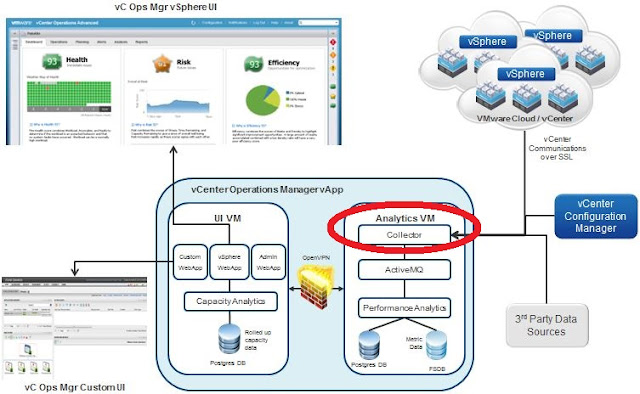This article is to ensure that I document a discussion I had a few days back with some Gurus of vCenter Operations Manager. The discussion ignited from a customer requirement where they wanted to know:
"If they can ETL (Extract, Transform & Load) 2 years old data from the vCenter Server DB into their freshly installed vCenter Operations Manager Environment."
Needless to say, customers see a great value in the Performance Analytic and Capacity Planning engine of vCenter Operations Manager. They want to ensure that they can use the historical data from VC and get some intelligence from the vCOps about the performance and capacity trends in their infrastructure in the past. Alongside, giving a peek into the history, this can also become a strong historical base for vCOps to provide future predictions which is another strong area of the product.
The requirement above immediately raises a few questions about the process of data collection:-
- Does vCOps talk to vCenter Database through the vCenter Adapter to collect the data? If yes, can I feed historical data to give vCOps a kick-start?
- What is the impact of Data Collection on vCenter Database? Do I need to increase resources CPU/Memory/IOPS to ensure that the performance is fine?
- Other questions are around Data Collection cycles, remote collection etc.
Well, to be honest there can be unique questions from each deployment. Therefore, instead of looking at the questions, let's look at the process of data collection.
To recap, let us first look at the architecture of vCOps vAPP which will give us a clear picture as to where does the collection happens. (I wrote an article a few months back about the architecture & sizing of vCOps in case you are interested.)
If you look at the red highlighted circle, you can see that the collector sits on the Analytics VM, from where is uses adapters to collect data from resources such as vCenter, vCloud Director, Configuration manager or even 3rd party sources.
Now if we look at the collection process specifically for the vCenter Adapter, this is how the data is collected:-
vCenter Operations Data Collection Process using vCenter Adapter
Well this explains how data is collected from a vSphere Environment by vCenter Operations Manager. Since this model does not talk to vCenter DB, it is quite clear that you cannot have an ETL approach which I discussed in the beginning of this article
To conclude the data gathering process of vCenter Operations Manager is completely through PerformanceManagerAPI where vCenter Server acts as a proxy and the data is pulled from the ESXi hosts.
Share and Spread the Knowledge.



